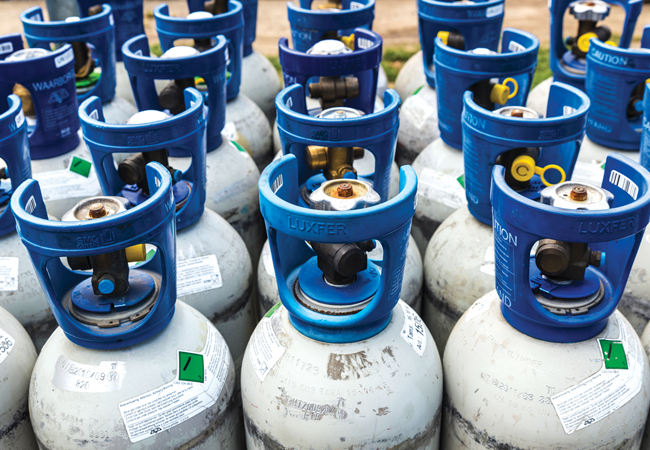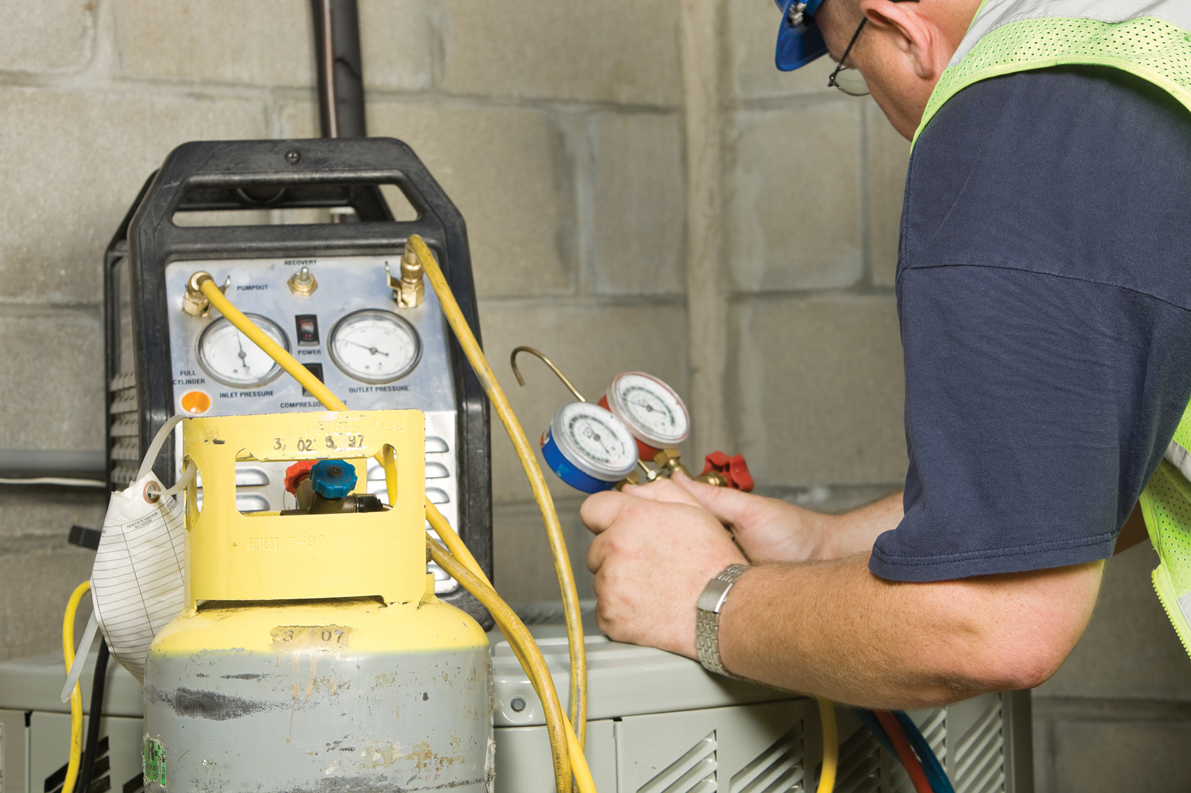
Safety procedures will have to be strengthened to deal with the fact that many alternative gases are mildly flammable
As widely predicted, 2018 is proving to be a momentous year for the air conditioning and refrigeration sectors.
The next step in the phase-down of global warming refrigerant gases under the European F-Gas Regulation kicked in on 1 January and shifted the landscape dramatically. Some of the most widely used gases are rocketing in price since the quota system meant the amount of HFC gases allowed on to the market dropped by a whopping 37%.
As the step change approached, wholesalers set record price rises of up to 60% on refrigerants such as R404A and R507A, which have high global warming potential (GWP). Even some lower GWP alternatives went up by as much as 30%. R410A, for example, now costs 30% more, as do some R22 service blends.
The situation is so fast-moving that a number of European industry bodies have called for the industry to stop installing equipment that uses R404A and R507A immediately – all of which has major technical and cost implications for anyone operating and attempting to service plant.
AREA, EFCTC, Asercom and the European Partnership for Energy and the Environment (EPEE) have produced joint guidance recommending designers and specifiers switch to new equipment or installers retrofit existing systems with alternative refrigerant gases with lower GWP.
Focus on recovery and recycling
They are also urging the industry to amplify efforts to reclaim HFC gas and switch to alternative substances as quickly as possible. However, they also warn that safety procedures will have to be strengthened to deal with the fact that many alternative gases, such as the increasingly popular R32, are mildly flammable.
At the third meeting of the F-Gas Consultation Forum, which took place recently in Brussels, all EU member states agreed to continue their aggressive phase-down of higher GWP gases. They resisted lobbying by some countries to relax quotas in order to relieve the pressure on prices. Instead, the forum called for all members to focus on the recovery and recycling of gas that is already on the market and, therefore, permitted for use for a further 10 years after ‘virgin’ gas is banned – and to encourage its markets to accelerate the take-up of alternatives.
They were arguing from a position of strength because it appears that emissions of HFCs have started to fall for the first time, which suggests F-Gas legislation is working. However, there is growing nervousness about the industry’s ability to work safely with flammable alternatives such as hydrocarbons, HFOs and R32, and the higher operating pressures of carbon dioxide.
R32 has a higher compressor discharge temperature than R410A, so it will increase wear on the compressor and significantly shorten its operating life
Of more immediate concern is the growing evidence that the rising cost of gas is tempting people to try to subvert the market. ‘In some cases, the pricing is getting ridiculous,’ says Graeme Fox, head of the UK’s safe refrigerant handling register, Refcom. ‘While it is legitimate to price gas in line with demand as certain types become scarcer, there is clearly also some manipulation of the market going on, leading to perverse behaviour.’
In particular, he is alarmed by the practice of using mildly flammable R32 as a replacement gas in air conditioning systems designed for R410A. ‘R32 is one of the new A2L class refrigerants, which are not suitable for retrofit projects at all because they require specific safety measures. R32 has a higher compressor discharge temperature than R410A, so it will increase wear on the compressor and significantly shorten its operating life.
‘However, that’s not even the half of it: simply charging an existing system with R32 breaches the refrigerant safety standard EN378, renders the manufacturer’s warranty invalid, and creates operating risks that potentially invalidate the user’s insurance policy as well.’
The pressure on price is also leading to a rise in the amount of illegal disposable cylinders coming into the UK from countries such as Turkey. This kind of non-recyclable container has been banned in Europe for more than a decade, but is suddenly cropping up again on eBay.
Not only are the cylinders prohibited, there is very little way of telling if they actually contain the gas advertised on the label and Fox is worried that we may be seeing a return of the counterfeit refrigerant market that caused havoc seven years ago.
‘Back in 2011, one Chinese gas supplier was selling what it claimed were bottles of R134A, which turned out to be methyl chloride. Putting the incorrect chemical into a system can be deadly – and it was.’
Policing
However, anyone breaching the F-Gas regulations today faces a tougher policing regime. The Environment Agency was recently given the power to impose on-the-spot fines of up to £200,000. In the past, many miscreants got away with it because of the cost and complexity of bringing legal action.
Ultimately, all of this means we are now looking at a very different refrigerant market and, as was highly visible at the recent Mostra Convegno exhibition in Milan, many manufacturers are switching to R32 for their new systems. Although it is an HFC, R32 has a significantly lower GWP than R410A – almost 75% lower – so will remain available for much longer, as it is the higher GWP gases that are being phased down first.
Japanese company Daikin, which makes equipment and refrigerant gas, says R32 is suitable for split air conditioners and heat pumps.
Panasonic has announced a switch over to R32 for its residential and commercial AC equipment, including single and multi-split systems. ‘Consolidating our portfolio to be compatible with R32 is an important step towards reducing the impact of air conditioning on our environment,’ says Panasonic Heating and Cooling UK country manager Alfredos Armaos.

A service technician recovers refrigerant from air conditioner system
Colin Goode, product and specification manager at Fujitsu Air Conditioning, explains that there is no perfect solution. All of the ‘new’ refrigerants will either be flammable or toxic and they will not be as energy efficient as predecessors, but the industry has to be pragmatic.
Goode believes there will be a significant move away from VRF systems towards chilled water because designers are looking for a way to keep toxic and/or flammable refrigerant outside the building – with the water used as the medium for circulating warmth and coolth inside. ‘Unfortunately, as soon as you go through a secondary medium you are losing efficiency. The plus side is you’re not bringing something toxic inside,’ he says.
He also thinks there has been ‘profiteering’ in the supply chain that is reflected in the massive price increases. However, the industry now has no choice.
‘This sword of Damocles has been hanging over us for seven years,’ says Goode. ‘Lots of people have stuck their heads in their sand, but the sand has now run through. This year is the crunch and we have to reduce our imports by 30% compared with last year.
‘This also has huge training implications because of the safety issues and consultants urgently need to bone up on the alternatives.’
So, 2018 has already been a big year for air conditioning and refrigeration, but it looks like we are just getting started.
